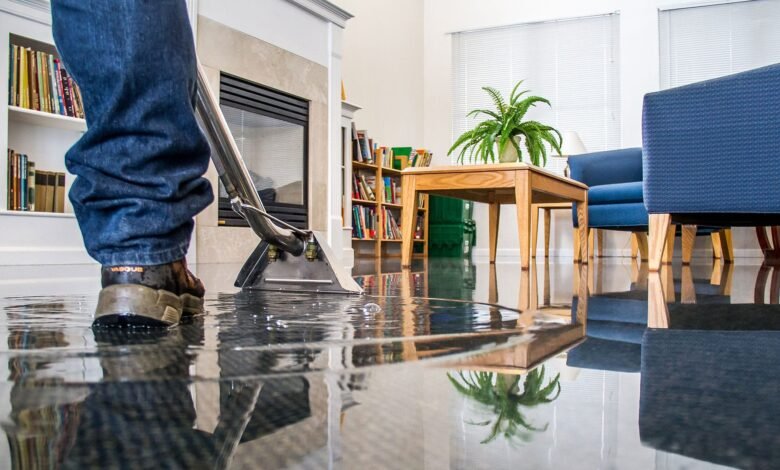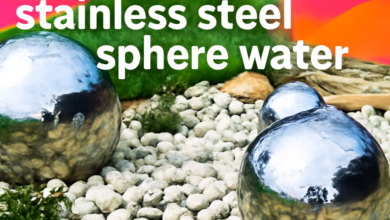How to Handle Water Damage in NJ: Restoration Tips and Best Practices

Introduction
Water damage is one of the most common and destructive problems faced by homeowners and businesses in New Jersey. Whether it’s due to heavy rainfall, burst pipes, storm surges, or leaking appliances, water intrusion can cause extensive structural damage, mold growth, and costly repairs if not addressed promptly. For anyone facing this issue, understanding the process of water damage restoration NJ is essential for minimizing loss, ensuring safety, and restoring the property to its original condition.
This guide walks you through everything you need to know about handling water damage, including immediate actions to take, professional restoration procedures, preventive tips, and why fast response times are critical in protecting your investment.
Common Causes of Water Damage in New Jersey
New Jersey’s unique climate and coastal geography make it susceptible to several sources of water damage. Seasonal storms, hurricanes, and snowmelt contribute to flooding, while older infrastructure and aging plumbing systems often result in burst or leaky pipes.
Other frequent causes include:
- Basement flooding during storms or due to poor drainage
- Roof leaks from heavy snow or ice dams
- Sewer backups in low-lying or urban areas
- Appliance malfunctions such as water heater or washing machine leaks
In many cases, water damage can go unnoticed until it has already compromised structural materials, insulation, or hidden cavities behind walls and under flooring.
Immediate Steps to Take After Water Damage
When water damage occurs, the first 24–48 hours are the most crucial. The longer water sits, the more it deteriorates building materials and promotes mold growth. Taking the right steps early can prevent a manageable situation from becoming a full-scale disaster.
Ensure Safety First
Before doing anything, assess the safety of the affected area. If water is near electrical outlets or appliances, turn off the electricity at the main breaker. Avoid walking through standing water if there’s any risk of electrical shock.
If the water source is from a broken pipe or appliance, shut off the main water supply immediately. If the damage is due to flooding, wait until it’s safe to re-enter the premises after the water recedes.
Document the Damage
Before cleanup begins, take detailed photos and videos of the water damage. Document all affected areas and items for insurance purposes. These records will be helpful when filing a claim and during discussions with adjusters.
Professional Water Damage Restoration Process
Once the immediate threat is under control, it’s time to bring in professionals to begin the water damage restoration NJ process. Restoration is not just about removing visible water—it’s about drying, sanitizing, repairing, and preventing further issues.
Step 1: Assessment and Inspection
Restoration technicians perform a thorough inspection of the property to determine the extent of the water damage. Using moisture meters, infrared cameras, and other tools, they identify affected areas that might not be visible to the naked eye.
Step 2: Water Extraction
Powerful pumps and vacuums are used to remove standing water quickly. The faster water is extracted, the less damage it can cause to floors, walls, and personal belongings.
Step 3: Drying and Dehumidification
Even after visible water is removed, moisture can remain trapped in porous materials. Industrial-grade air movers and dehumidifiers are set up to completely dry the structure. This stage can take several days, depending on the extent of the water intrusion.
Step 4: Cleaning and Sanitization
Contaminated water (especially from sewage backups or floodwater) requires deep cleaning to remove bacteria, mold spores, and odors. All affected surfaces are disinfected to ensure the space is safe for occupancy.
Step 5: Restoration and Repairs
Once the property is clean and dry, repairs begin. This can include replacing drywall, repainting, fixing floors, and restoring damaged furnishings. In more severe cases, parts of the structure may need rebuilding.
Understanding Water Damage Categories and Classes
Restoration professionals categorize water damage by its source and level of contamination. This classification helps determine the level of response needed.
Water Damage Categories
- Category 1: Clean water from sources like broken pipes or rainwater.
- Category 2: Gray water with some contaminants, such as from dishwashers or washing machines.
- Category 3: Black water that is highly contaminated, like sewage or floodwater.
Water Damage Classes
These reflect how much moisture is involved and how far it has spread:
- Class 1: Minimal absorption, affecting only a small area
- Class 2: Larger areas with porous materials like carpet and drywall affected
- Class 3: Water has saturated ceilings, walls, insulation, and floors
- Class 4: Special drying methods required due to materials like stone, brick, or hardwood
Knowing the category and class of your damage helps ensure the right remediation plan is used.
The Role of Mold in Water Damage
If water is not completely removed and the area isn’t properly dried within 24–48 hours, mold will likely start to grow. Mold thrives in moist, dark environments, and once it takes hold, it can spread quickly throughout the property via HVAC systems and air circulation.
Mold not only causes health issues like respiratory problems and allergies but also deteriorates building materials, making repairs more extensive and costly. Restoration professionals often conduct mold assessments alongside water damage inspections to ensure a complete cleanup.
Insurance and Water Damage Claims
Most homeowners’ insurance policies in NJ cover water damage resulting from sudden and accidental incidents, like pipe bursts or appliance malfunctions. However, they may not cover damage due to poor maintenance or gradual leaks.
Flood damage is typically excluded from standard insurance and must be covered under a separate flood insurance policy. After water damage, it’s important to:
- Contact your insurer immediately
- Provide documentation of the damage
- Keep records of communication and repair costs
Working with a restoration company experienced in insurance coordination can help streamline your claim and maximize your reimbursement.
Choosing the Right Restoration Company in NJ
Selecting a trusted restoration company is critical to successful recovery. Look for licensed, bonded, and insured professionals who are IICRC-certified (Institute of Inspection Cleaning and Restoration Certification). The best companies will:
- Offer 24/7 emergency response
- Use advanced equipment for detection and drying
- Provide written estimates and clear communication
- Work directly with your insurance provider
Ask for referrals, check online reviews, and ensure the company has experience dealing with NJ-specific issues such as hurricane recovery, coastal flooding, and basement moisture problems.
Read Also: 5 Reasons North Port Homeowners Should Consider Autonomous Drone Roof Inspections
Preventive Measures to Avoid Future Water Damage
While it’s impossible to control all causes of water damage, there are steps homeowners and property managers can take to reduce the risk:
- Install sump pumps and backflow valves in basements
- Maintain gutters and ensure proper roof drainage
- Insulate pipes to prevent freezing in winter
- Fix leaks and drips promptly
- Ensure proper ventilation in bathrooms, kitchens, and crawl spaces
- Regularly inspect appliances and plumbing systems
Preventative maintenance is always more cost-effective than dealing with restoration after a disaster.
Conclusion
Water damage can strike any property at any time—and when it does, a prompt and professional response is the key to minimizing loss and restoring safety. From initial inspection to complete structural restoration, understanding the steps of water damage restoration NJ allows you to act with confidence and speed when the unexpected occurs. With the right team, proper techniques, and preventative strategies in place, you can protect your property, your investment, and the health of your family or occupants. Don’t wait for damage to worsen—get expert help and restore your peace of mind.




